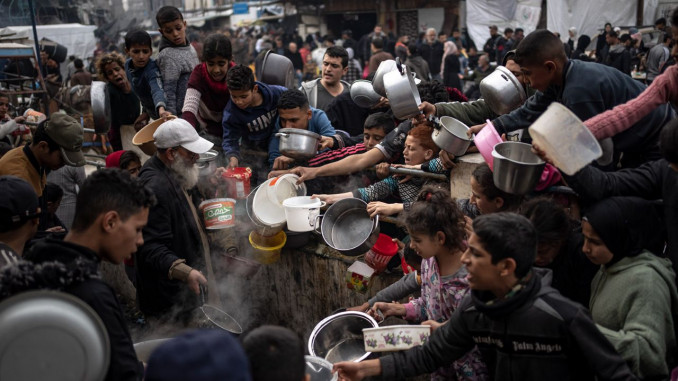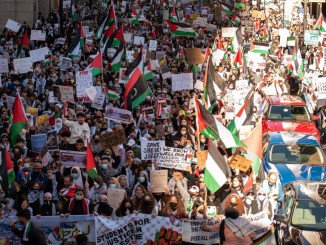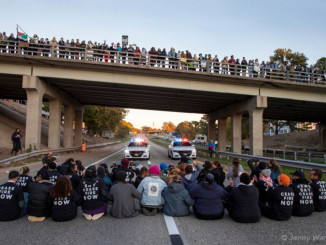
Famine is choking the life out of the population of Gaza where two million people struggle to live. At no other point in recent history has there been such starvation of an entire population. The United Nations predicts that more than 200 people will be dying from starvation every day. Nearly 700,000 people, almost a third of Gaza’s population, are already in “catastrophic” conditions, with another 41% considered to be in “emergency” conditions. Within weeks, this will increase, and more than one million people will be in a state of “catastrophe” or “famine.” In the words of one expert, “we are about to witness in Gaza the most intense famine since the Second World War.” Already, at least 27 children have died from starvation. In Northern Gaza, where the famine is at its worst, a quarter of all children under five are malnourished.
This hunger is not due to scarcity, a natural disaster, or a logistically challenging situation. There are roads and infrastructure and plenty of food in the region that could bring hundreds of trucks a day into Gaza to feed all 2.2 million Palestinians. Instead, those trucks carrying food and other supplies are waiting to enter. At multiple check points, these trucks are blocked, lined up two or three across, and backed up for a mile or more.
The starvation in Gaza is caused by the state of Israel, which controls Gaza’s borders. Israel’s policy has been to collectively punish the entire population of Gaza through this siege. This is not new, but is happening now, to a much worse and more lethal degree than before. Before October 7th, Israel controlled the borders and the imports into Gaza, and kept 2.2 million people “on a diet,” strictly calculating the bare minimum number of calories to enter for consumption. Nearly 80 percent of people relied on aid to survive, depending on the roughly 500 trucks carrying food and supplies that entered Gaza each day. Between February and March, the U.N. reported only 10-15 trucks were permitted to enter Gaza City—an area with approximately 300,000 people. Half of all warehouses in Gaza have been destroyed by fighting and are nonfunctional.
The deaths from starvation are not just due to lack of food. When people starve, their immune systems weaken, and infections and diseases kill more rapidly and widely. In Gaza, where there are no medical supplies, no sanitation, and no clean drinking water, the deaths from preventable diseases will be unforgivable.
The impact of famine does not end if food returns. The psychological trauma and physical impact will be felt for generations. The collective punishment of Gaza will damage all who survive. This is in addition to the violence of the assault conducted by Israel in the last 180 days. Israel has massacred people collecting food from aid trucks and aid workers themselves.
On Tuesday April 2, Israel killed seven aid workers (most of them international volunteers) by bombing their marked vehicle after they had coordinated with the Israeli military as to their whereabouts. Tuesday’s attack comes after months of Israel attacking people collecting aid, targeting essential workers such as medical and aid workers, as well as journalists. It is outrageous that the media blindly regurgitated Netanyahu’s claim that this was “unintended”!
A handful of politicians have begun to speak in support of a ceasefire. On March 25, the U.S. finally abstained in a U.N. vote for a ceasefire resolution. For months, the United States was the only country opposed to a ceasefire resolution in the United Nations Security Council, and had vetoed every attempt to pass a ceasefire resolution. Of course, faced with an election, the Biden administration and the Democratic Party have to reckon with the fact that their policy of supporting Israel is deeply unpopular with voters.
This has not stopped the government from continuing its overall support for Israel. In March, Congress agreed to ban funding for UNRWA (the main UN aid source for Palestinians) until 2025, while continuing to pledge billions of dollars to Israel in so-called “aid.” That same agreement also contained provisions to protect Israel from any actions by the International Criminal Court.
The United States still claims it will help build a port for Gaza to receive international aid, and yet the U.S. is the country with the most powerful influence over Israel and could push for the opening of borders. U.S. military planes have air dropped food into Gaza, a pathetic amount compared to the vast need. These airdrops have killed people: crushing people in refugee camps, and landing in the sea where 12 people drowned trying to recover them.
The bombs and munitions used to invade Gaza and conduct acts of genocide are also made in the U.S. There has been no slowdown in the sales of U.S. arms. The blood of Palestinians is on the hands of the U.S. government, paid for with tax dollars out of our pockets.
Ultimately, this conflict reveals the harsh reality of U.S. foreign policy: anything goes in the attempt to maintain U.S. global dominance. So long as the United States has an economic interest in the Middle East, Israel will remain a key player. The challenge for all of us opposed to the genocide of Palestinians remains: how will we continue to organize to oppose the actions of the government which speaks in our name, and uses our tax dollars to fund the Israeli state?




